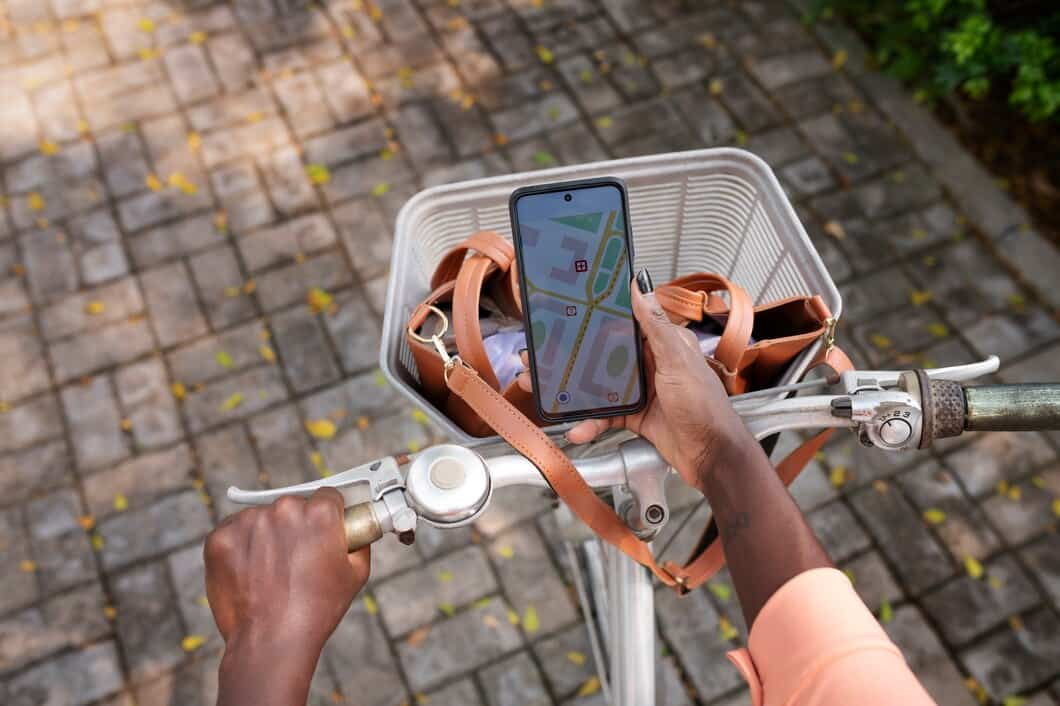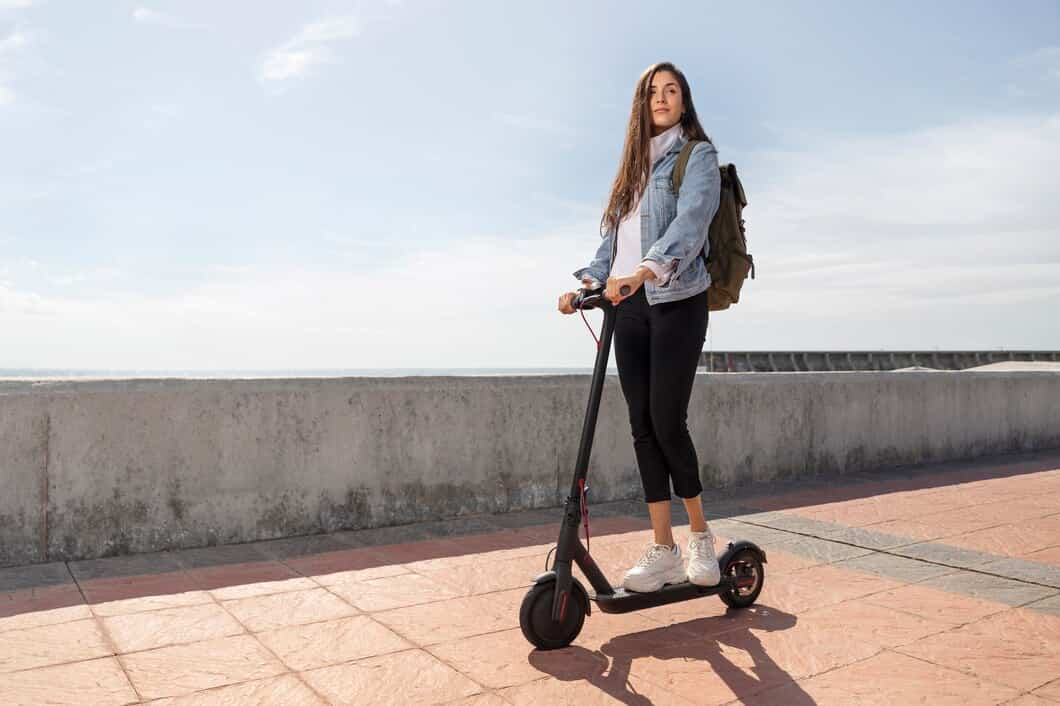How Far Can An Electric Bike Travel On A Single Charge?
Time: 13 Apr 2024 22:40

Electric bikes are becoming increasingly popular as a way to get around town or commute to work. But one of the most common questions potential buyers have is: "How far can an electric bike travel on a single charge?" The answer to this question depends on a number of factors, including the type of electric bike, the size of the battery, the terrain you're riding on, and how much you weigh.
Generally speaking, most electric bikes can travel between 20 and 50 miles on a single charge. However, some high-end models can travel up to 100 miles or more. If you're planning on using your electric bike for long distances, it's important to choose a model with a larger battery.
Types of electric bikes
There are three main types of electric bikes: Type 1 has a throttle only and no pedaling assistance, Type 2 is pedal-assist only and has no throttle, and Type 3 is a combination of the two, with both a throttle and pedal assist. Type 1 e-bikes are the most basic and affordable, while Type 3 e-bikes are the most versatile and feature-rich.
The type of electric bike you choose will depend on your needs and riding style. If you're looking for a simple and affordable e-bike for commuting or running errands, a Type 1 e-bike may be a good option. If you're looking for a more versatile e-bike that you can use for both commuting and recreational riding, a Type 3 e-bike may be a better choice.
Battery capacity
The capacity of an electric bike battery is measured in watt-hours (Wh). Wh is a measure of energy, and it tells you how much energy the battery can store. The higher the Wh rating, the more energy the battery can store, and the longer the bike can travel on a single charge.
The capacity of an electric bike battery will vary depending on the size of the battery, the type of battery, and the efficiency of the battery. Smaller batteries will have a lower Wh rating than larger batteries. Lead-acid batteries will have a lower Wh rating than lithium-ion batteries. And batteries that are not efficient will have a lower Wh rating than batteries that are efficient.
When choosing an electric bike, it is important to consider the capacity of the battery. If you plan on riding your bike for long distances, you will need a battery with a high Wh rating. If you plan on riding your bike for short distances, you can get away with a battery with a lower Wh rating.
The battery capacity of an electric bike is one of the most important factors that will determine how far you can travel on a single charge. By understanding the different factors that affect battery capacity, you can choose the right bike for your needs.
Motor power
Motor power is a key determinant of how far an electric bike can travel on a single charge. Higher-powered motors allow the bike to travel further distances, while lower-powered motors are more suited for shorter trips. The power of the motor is typically measured in watts, and most electric bikes have motors in the range of 250-500 watts.
In addition to motor power, there are several other factors that can affect the distance an electric bike can travel on a single charge. These include the weight of the bike and rider, the terrain being ridden on, and the speed at which the bike is ridden.
For example, a heavier bike will require more power to move, and will therefore travel a shorter distance on a single charge than a lighter bike. Similarly, riding on hilly terrain will require more power than riding on flat terrain, and will therefore also result in a shorter distance traveled.
Finally, the speed at which the bike is ridden will also affect the distance traveled. Riding at higher speeds will require more power, and will therefore result in a shorter distance traveled than riding at lower speeds.
Terrain

The terrain you ride on can also affect your range. Riding on flat, paved roads will allow you to travel farther than riding on hills or off-road. This is because you have to work harder to push your bike up hills or over rough terrain, which uses more energy from the battery.
The surface you ride on can also make a difference. Riding on loose sand or gravel will require more energy than riding on a paved road, as the tires have to work harder to grip the surface.
If you plan on riding off-road or on hills, it's important to keep the terrain in mind when planning your route. You may need to charge your battery more often or bring a spare battery with you.
In general, you can expect to travel between 20 and 50 miles on a single charge, depending on the terrain you're riding on and the efficiency of your bike.
Weight of rider and bike
The weight of the rider and bike plays a significant role in determining the range of an electric bike on a single charge. A heavier rider and bike will require more energy to accelerate and maintain speed, which will drain the battery faster. Conversely, a lighter rider and bike will require less energy, allowing for a longer range on a single charge.
In addition to the weight of the rider and bike, other factors that affect the range of an electric bike include the terrain, wind conditions, and the type of battery. However, the weight of the rider and bike is one of the most significant factors to consider when estimating the range of an electric bike.
Wind resistance
Wind resistance is a major factor that affects the distance an electric bike can travel on a single charge. Wind resistance increases as the speed of the bike increases, so riding into a headwind will reduce the bike's range significantly. For example, a bike that can travel 30 miles on a single charge with no wind may only be able to travel 20 miles into a strong headwind.
There are a few things you can do to reduce wind resistance and extend the range of your electric bike. First, try to ride with the wind at your back as much as possible. Second, avoid riding in strong headwinds. Third, dress in aerodynamic clothing and wear a helmet with a visor to reduce drag. Finally, make sure your bike is properly tuned and that the tires are properly inflated.
By following these tips, you can help to extend the range of your electric bike and enjoy longer rides.
Tire pressure
Tire pressure is a critical factor in determining the range of an electric bike. Properly inflated tires roll more easily, reducing resistance and extending the bike's range on a single charge. Underinflated tires, on the other hand, increase rolling resistance, shortening the bike's range.
To optimize tire pressure for maximum range, it's recommended to check and adjust the pressure regularly. The optimal pressure varies depending on the type of tire, rider weight, and terrain, but a general guideline is to inflate the tires to 40-60 psi for road bikes and 20-30 psi for mountain bikes. By maintaining proper tire pressure, you can ensure that your electric bike delivers the maximum possible range on a single charge.
Temperature
Temperature also plays a key role in determining the range of an electric bike on a single charge. In hot weather, the battery pack can overheat, which can reduce its capacity and shorten its lifespan. On the other hand, in cold weather, the battery pack can take longer to charge and may not be able to hold a charge as well.
The ideal temperature range for electric bikes is between 50 and 80 degrees Fahrenheit (10 to 27 degrees Celsius). If you're planning on riding your electric bike in extreme temperatures, it's important to take precautions to protect the battery pack.
In hot weather, you can try to keep the battery pack cool by placing it in a shaded area or using a battery cooler. In cold weather, you can try to keep the battery pack warm by wrapping it in a blanket or placing it in a heated area.
By following these tips, you can help to extend the range of your electric bike on a single charge and keep your battery pack healthy.
Riding style
Riding style plays a significant role in determining the distance an electric bike can travel on a single charge. Aggressive riding, characterized by frequent acceleration, hill climbing, and high speeds, consumes more energy and reduces range. Conversely, a more conservative riding style, involving gradual acceleration, smooth pedaling, and lower speeds, conserves energy and extends range.
The weight of the rider and any cargo also impacts range. Heavier loads require more energy to propel, reducing the distance the bike can travel. Additionally, riding in strong winds or on rough terrain can increase energy consumption and shorten range.
Tire pressure should be closely monitored to ensure optimal range. Underinflated tires increase rolling resistance, consuming more energy and reducing range. Properly inflated tires provide the best balance between comfort, efficiency, and range.
Regular maintenance can also contribute to extending range. Keeping the bike clean, lubricated, and tuned ensures that all components are functioning efficiently, minimizing energy loss and maximizing range.
Frequently Asked Questions

To Sum Up
In summary, the distance an electric bike can travel on a single charge depends on several factors, including battery capacity, motor power, terrain, and riding style. By considering these factors and choosing an e-bike that suits your needs, you can maximize its range and enjoy longer rides.
Additionally, regular maintenance, such as keeping the battery charged and properly inflated tires, can help extend the range of your electric bike.
Recommendation
How far can an electric bike travel on a single charge?
Electric bikes are becoming increasingly popular as a way to get around town or commute to work. But one of the most common questions potential buyers have is: "How far can an electric bike travel on...
How far can an electric bike go on a single charge?
An electric bike's range on a single charge is determined by various factors, including battery capacity, motor efficiency, terrain, and rider weight. A typical e-bike can travel between 20 and 50 mil...
Are Ebikes worth getting?
What are the benefits of owning an ebike? Let's start with an overview of the benefits of owning an e-bike. Firstly, they offer a convenient and eco-friendly mode of transport, allowing you to naviga...
What is the lifespan of the eBike battery?
The lifespan of an eBike battery is a crucial factor to consider when investing in an electric bike. Several factors contribute to battery lifespan, including battery type, maintenance practices, and...
How long does a cheap eBike last?
This article will explore the average lifespan of an affordable e-bike, considering factors such as battery life, motor durability, and maintenance practices. We will examine real-world experiences of...



